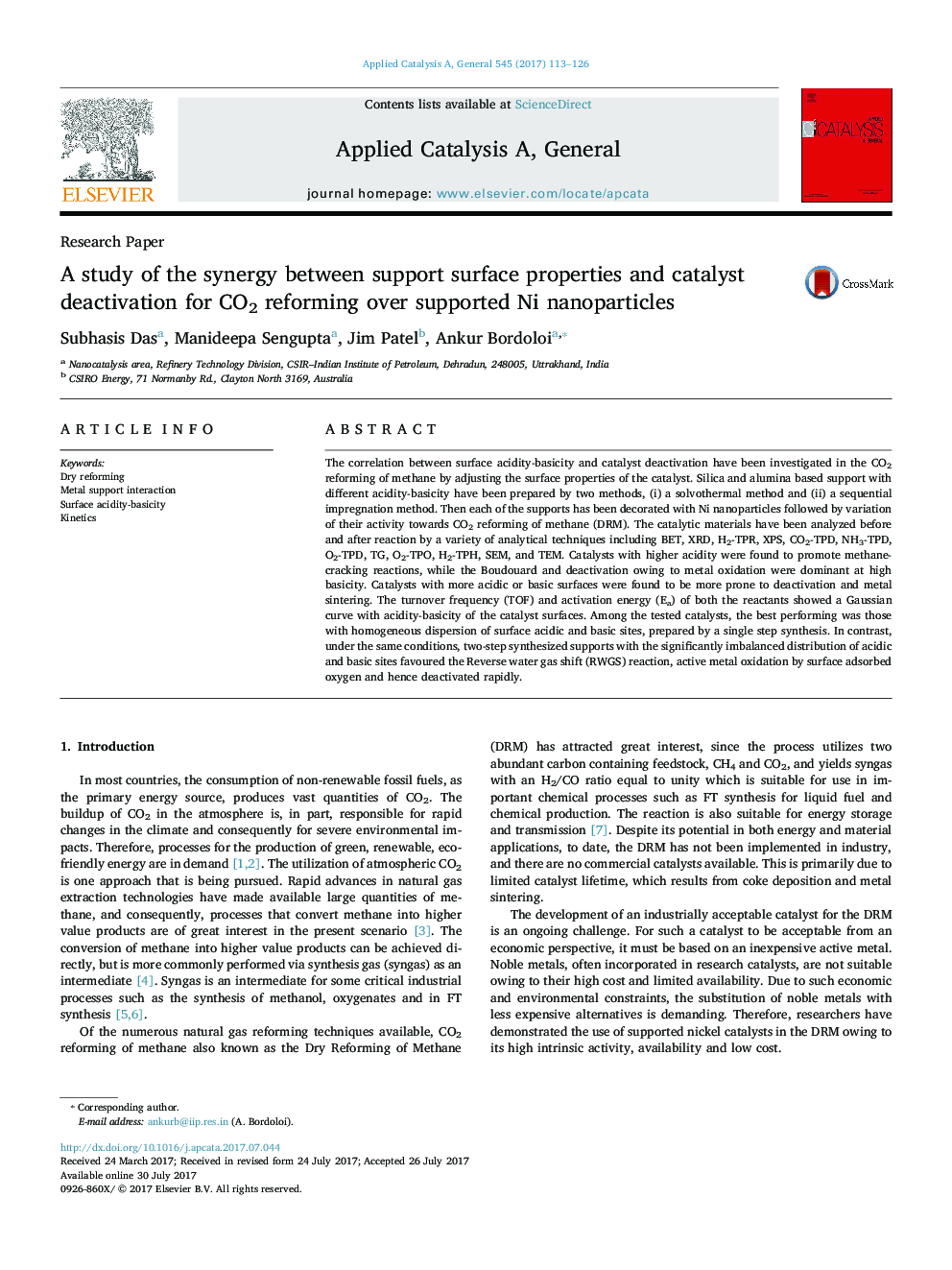| کد مقاله | کد نشریه | سال انتشار | مقاله انگلیسی | نسخه تمام متن |
|---|---|---|---|---|
| 6453260 | 1418501 | 2017 | 14 صفحه PDF | دانلود رایگان |

- Ni-based catalyst with different surface acidity-basicity has been prepared by a one step process and a stepwise sequential process.
- One step process favours homogeneous distribution of acidic and basic counterparts while in stepwise process random distribution of acidic, basic counterparts observed.
- The moderate concentration of acidic and basic sites with homogeneous distribution in one step synthesis catalysts favours methane reforming with little side reactions.
- Irregular and random distribution of acidic and basic counterparts cause higher surface acidity or basicity, prefers side reactions and deactivate rapidly.
The correlation between surface acidity-basicity and catalyst deactivation have been investigated in the CO2 reforming of methane by adjusting the surface properties of the catalyst. Silica and alumina based support with different acidity-basicity have been prepared by two methods, (i) a solvothermal method and (ii) a sequential impregnation method. Then each of the supports has been decorated with Ni nanoparticles followed by variation of their activity towards CO2 reforming of methane (DRM). The catalytic materials have been analyzed before and after reaction by a variety of analytical techniques including BET, XRD, H2-TPR, XPS, CO2-TPD, NH3-TPD, O2-TPD, TG, O2-TPO, H2-TPH, SEM, and TEM. Catalysts with higher acidity were found to promote methane-cracking reactions, while the Boudouard and deactivation owing to metal oxidation were dominant at high basicity. Catalysts with more acidic or basic surfaces were found to be more prone to deactivation and metal sintering. The turnover frequency (TOF) and activation energy (Ea) of both the reactants showed a Gaussian curve with acidity-basicity of the catalyst surfaces. Among the tested catalysts, the best performing was those with homogeneous dispersion of surface acidic and basic sites, prepared by a single step synthesis. In contrast, under the same conditions, two-step synthesized supports with the significantly imbalanced distribution of acidic and basic sites favoured the Reverse water gas shift (RWGS) reaction, active metal oxidation by surface adsorbed oxygen and hence deactivated rapidly.
87
Journal: Applied Catalysis A: General - Volume 545, 5 September 2017, Pages 113-126